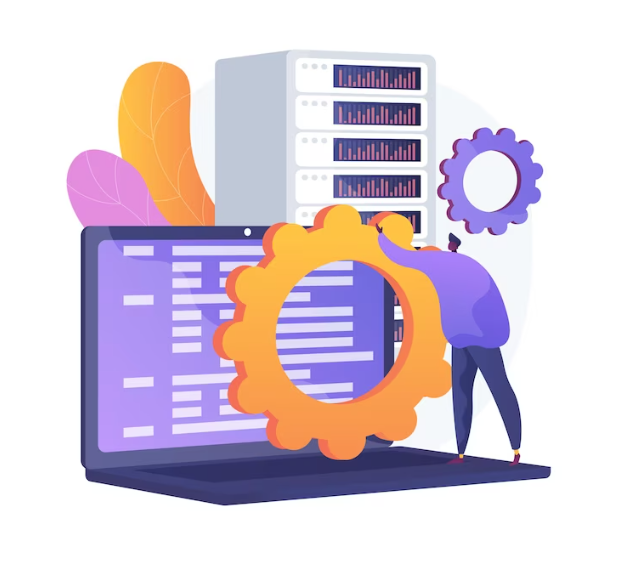Integration Services
Unlocking Seamless Operations: The Power of System Integration
In the ever-evolving landscape of technology, businesses are constantly striving to enhance efficiency, streamline operations, and improve customer experiences. One of the most powerful tools in achieving these goals is system integration. This article delves into the world of system integration, exploring its significance, benefits, challenges, and best practices.
Understanding System Integration:
System integration involves connecting various standalone software applications and systems to function harmoniously as a cohesive unit. It aims to eliminate data silos, enable seamless communication, and provide a unified view of information across the organisation.

The Significance of System Integration:
In today’s interconnected business ecosystem, organisations rely on a multitude of applications and systems to carry out various functions. However, without integration, these systems often operate in isolation, leading to inefficiencies, data duplication, and fragmented processes. System integration bridges these gaps, allowing data and processes to flow seamlessly between different systems.
Benefits of System Integration:
- Enhanced Efficiency: Integration reduces manual data entry and repetitive tasks, freeing up valuable time and resources.
- Improved Accuracy: Automated data transfer minimises the risk of errors caused by manual input.
- Real-time Insights: Integration provides real-time access to accurate and up-to-date data, enabling informed decision-making.
- Streamlined Processes: Workflows become smoother as data seamlessly moves between applications, improving overall productivity.
- Enhanced Customer Experience: Integrated systems enable a unified view of customer data, leading to personalised and consistent interactions.
Challenges of System Integration:
While the benefits of system integration are clear, it’s important to acknowledge potential challenges:
- Complexity: Integrating systems with diverse architectures and protocols can be intricate and time-consuming.
- Data Mapping: Ensuring data consistency and mapping between different systems requires careful planning.
- Security Concerns: Integration involves sharing data across systems, necessitating robust security measures to protect sensitive information.
Best Practices for Successful System Integration:
- Clear Objectives: Define clear integration goals and outcomes to align the integration strategy with business needs.
- APIs and Middleware: Leverage Application Programming Interfaces (APIs) and middleware tools to facilitate seamless communication between systems.
- Data Governance: Establish data standards and governance practices to maintain data accuracy and integrity.
- Testing and Validation: Rigorously test the integrated system in a controlled environment to identify and rectify any issues.
- Scalability: Choose integration solutions that can scale with your business’s growth and evolving needs.
Our Integration Service Include:
1. Integration with Existing Systems, Databases, and Third-party Applications:
In today’s interconnected business landscape, seamless communication between various systems, databases, and third-party applications is crucial for optimising processes and making informed decisions. Our “Integration with Existing Systems, Databases, and Third-party Applications” service offers a comprehensive solution to bridge the gap between disparate software solutions, ensuring data flows smoothly and operations remain streamlined.
Key Components:
- System Analysis: Our experts conduct a thorough analysis of your existing systems, databases, and third-party applications to understand their architecture, data structures, and communication protocols.
- API Development: We design and develop custom Application Programming Interfaces (APIs) that facilitate data exchange and communication between different systems. These APIs act as bridges, allowing seamless interaction while preserving data integrity.
- Data Mapping and Transformation: We meticulously map data fields between systems, ensuring consistent formatting and compatibility. Complex transformations are applied when necessary to align data accurately.
- Real-time Synchronisation: Our integration solutions enable real-time data synchronisation, ensuring that updates made in one system are reflected immediately in connected systems, reducing the risk of data discrepancies.
Benefits:
- Efficiency Boost: Integration eliminates manual data entry, reducing errors and time spent on repetitive tasks.
- Unified View: Integrated systems provide a unified view of data, enabling better decision-making across departments.
- Enhanced Customer Experience: Seamless integration results in smoother customer interactions, with information readily available across touchpoints.
- Operational Agility: The ability to quickly adapt to changing business needs through integrated systems enhances agility and responsiveness.
2. System Integration with Cloud Services:
As organisations embrace cloud computing for its scalability and flexibility, integrating on-premises systems with cloud services becomes paramount. Our “System Integration with Cloud Services” offering bridges the gap between traditional infrastructures and cloud environments, ensuring a cohesive and efficient IT ecosystem.
Key Components:
- Cloud Strategy Development: We collaborate with you to formulate a tailored cloud integration strategy, identifying which systems and data should be migrated to the cloud for optimal results.
- API Integration: Our experts design and implement APIs that enable seamless communication between on-premises systems and cloud services, allowing data exchange and functionality sharing.
- Data Security: Rigorous security measures are implemented to safeguard data as it travels between on-premises systems and the cloud. Encryption, authentication, and access controls ensure data protection.
- Scalability and Flexibility: By integrating on-premises systems with cloud services, your organisation can scale resources as needed, accommodating changing demands without overprovisioning.
Benefits:
- Cost Efficiency: Integrating on-premises systems with cloud services optimises resource utilisation, leading to potential cost savings.
- Scalability: Cloud integration enables rapid scalability, allowing your IT infrastructure to grow in line with business demands.
- Innovation Enablement: Integration with cloud services unlocks the potential to leverage advanced cloud-based technologies for innovation and competitive advantage.
- Future-Readiness: By integrating with cloud services, your organisation is better prepared to adapt to evolving market dynamics and technological advancements.
In embracing our System Integration services, you’re not just connecting systems; you’re forging a unified, efficient, and future-ready ecosystem. Whether it’s ensuring seamless communication between existing systems or integrating with cloud services, our expertise empowers your organisation to achieve operational excellence and drive growth in the digital age.
Why Trust Us:
Expertise: With years of industry experience, we’re well-versed in the complexities of system integration. Our skilled professionals bring a deep understanding of various technologies and integration methods, ensuring your integration project is in capable hands.
Proven Track Record: Our portfolio boasts a series of successful system integration projects across diverse industries. We’ve consistently delivered results, enhancing operational efficiency, data accuracy, and business agility for our clients.
Tailored Solutions: We don’t believe in one-size-fits-all approaches. Your business is unique, and our solutions are tailored to your specific needs, ensuring that the integration process seamlessly aligns with your goals and objectives.
Reliability: Count on us for reliability and transparency throughout the integration journey. We communicate openly, provide regular updates, and collaborate closely with your team to ensure smooth progress.
Frequently Asked Questions (FAQ) about System Integration Services
What is system integration?
System integration is the process of connecting different software applications, databases, and systems to enable them to work together seamlessly and share data and functionalities.
Why is system integration important for businesses?
System integration enhances efficiency by eliminating data silos, streamlines processes, and provides a unified view of information, leading to better decision-making and improved customer experiences.
What is “Integration with Existing Systems, Databases, and Third-party Applications”?
This service focuses on creating connections between your current software systems, databases, and third-party applications to ensure efficient data exchange and communication.
How does data mapping and transformation work in system integration?
Data mapping involves aligning data fields between systems, ensuring compatibility. Transformation may involve converting data formats or applying calculations to ensure accurate data exchange.
What is “System Integration with Cloud Services”?
This service involves linking on-premises systems with cloud platforms, enabling data exchange, communication, and functionality sharing between traditional IT infrastructures and cloud environments.
How does system integration enhance security?
System integration can enhance security by implementing robust encryption, authentication mechanisms, and access controls to protect data as it’s exchanged between different systems or migrated to the cloud.
How long does system integration typically take?
The duration of a system integration project depends on factors like the complexity of systems, the number of integrations required, and the extent of data mapping and transformation. A well-planned integration may take weeks to months.
Can system integration be customised for specific business needs? Absolutely. System integration services are tailored to your business requirements. Whether you need to connect specific applications, databases, or third-party tools, integration can be customised to suit your needs.
What are the potential challenges in system integration?
Challenges in system integration may include dealing with different communication protocols, ensuring data consistency, managing data security during transfer, and troubleshooting integration issues.
How do I know if my business needs system integration services?
If your organisation relies on multiple software applications that don’t communicate effectively or you experience data duplication and manual data entry, it’s likely that system integration can streamline your operations.
How can I ensure a successful system integration process?
A successful integration process requires careful planning, clear objectives, collaboration with experts, rigorous testing, and monitoring post-integration to ensure smooth operations.
What is the role of APIs in system integration?
APIs (Application Programming Interfaces) act as intermediaries that allow different software systems to communicate and share data or functionalities in a standardised and secure manner.
Why should I take action and embrace system integration services?
Embracing system integration services now can lead to immediate and long-term benefits for your business. By streamlining operations, enhancing efficiency, and unlocking innovation, you’ll position your organisation for success in an increasingly competitive landscape. Don’t wait—seise the opportunity to transform your business today! Contact us to start your integration journey.

